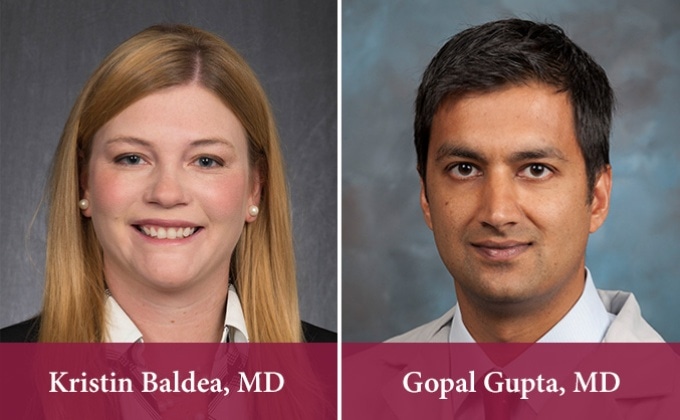Sep 27 2017
Physicians at Loyola Medicine have suggested a simple new system to enhance the reporting of robotic surgeries done by Surgeons in training.
 Credit: Loyola Medicine
Credit: Loyola Medicine
According to a study published in the Journal of Surgical Education by First Author Kristin Baldea, MD, Senior Author Gopal Gupta, MD, and colleagues, the system, called RoboLog, was effectively piloted on 310 urologic robotic surgeries.
Robotic-assisted surgery is gaining acceptance among Urologists and currently is the most common method performed for prostate cancer surgery. The Surgeon sits at a console that has a 3D monitor and two joysticks. Movements by the Surgeon's wrist or hand are translated into precise movements of the surgical instruments.
Following Medical School, Surgeons undertake training while serving as residents, and some Surgeons take up extra training as fellows. However, there is no standardized training in robotic surgery for residents and fellows and few recommendations for defining competency.
The Accreditation Council for Graduate Medical Education's logging system for robotic surgeries is the same as that employed for other types of surgery: A resident either carried out the surgery or served as an assistant. But this system does not accurately reveal a trainee's real robotic experience because there is significant variation in how much a resident contributes on the console. For instance, a resident who performs just one part of a robotic prostate cancer surgery – removing the lymph nodes – will obtain the same credit as a resident who does the surgery from start to end.
RoboLog is a web-based program that offers much more comprehensive information regarding a resident's participation in robotic surgeries. The system comprises of 11 common urologic robotic processes. For each surgery recorded, there is a drop-down menu listing the stages of the surgery. The resident checks each stage that he or she done, and how many minutes it took to carry out each of the key stages. No patient identifying information is incorporated. Residents who have limited experience in specific surgical stages can be identified early and this deficit can be checked.
The median time for a resident to log a case was 59 seconds while the median time for a Supervising Surgeon to assess it was 53.5 seconds.
Two other centers have started using RoboLog and Loyola hopes to make the system available to any program that desires to use it.
"Widespread usage of a logging system with more insight into step-specific involvement is needed," researchers concluded. "RoboLog fills this need and can be used to track robotic training progress and aid in development of a standardized curriculum."
The research paper is titled, "Design and Implementation of a Robotic Surgery Training Experience Logging System."
Besides Drs. Baldea and Gupta, other co-authors are Ryan Thorwarth, Petar Bajic, MD, and Marcus Quek, MD.